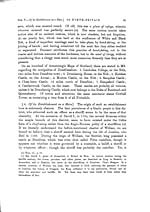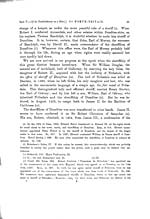Volume 5
(70) Page 64
Download files
Individual page:
Thumbnail gallery: Grid view | List view

64 it pretty certain that Dumfries existed under the regimen of a sheriffdom, at the lamented demise of Alexander III. It was certainly a shire, in the wretched year 1296, as we know from the transactions of Edward I. in North-Britain; while Dumfries-shire included within its ample limits the whole stewartry of Kirkcudbright on the west, with the debateable ground as far as the Esk on the east (p). The true epoch of certainty on this interesting topic is the year 1305, when Edward I., by his ordinance for the government of Scotland, recognized Dumfries as a sheriffdom, and when he appointed Richard Syward to be his sheriff of Dumfriesshire (q). From that epoch Dumfries continued a sheriffdom; but it is not easy to trace the series of its sheriffs, till the office became hereditary in the reign of Robert II. ; yet those intimations must be confined pretty much to Niths- dale. A very different polity prevailed in Annandale from the epoch of record. By David I., grant to Robert de Brus of the jus gladii, the law of the sword was given to him within the whole bounds of Annandale. When such a jurisdiction was conferred by such a sovereign as David I., we may suppose that he thought a strong government was necessary for the just rule of a very mixed people. When William the Lion, however, confirmed his grandfather's grant to Robert de Brus, he reserved to himself the pleas of the crown, and thereby limited the jurisdiction of the baron. The power both of the king and of the lord, within Annandale, continued under the charter of William till the accession of Robert de Brus, when the authority of both were conjoined in one person. Meantime Eskdale was held by several proprietors, with baronial juris- dictions of various kinds, throughout the twelfth and thirteenth centuries, when the Celtic customs gradually gave way to feudal privileges (r). The accession of Bruce to the crown, for which his grandfather had in vain competed, forms an epoch in the history of jurisdictions, as well as in the annals of the kingdom. While the crown was fought for throughout the succession war, the town and castle and country of Nithsdale, as they were of great importance to the English government, were as often placed in the (p) Prynne, iii. 652-663. On that occasion Edward I. addressed his precepts to his sheriff of Dumfries. Rymer, ii. 723-27 ; Rot. Scoti�, i., 24-5, 30. He had at the same time a bailiff' at Dumfries, to whom Edward I. addressed a writ, commanding him " to cause the bishop of Man to appear before the King at Berwick." Prynne, iii. 668. Yet this seems to have been more properly the sheriff's duty. (q) Ryley's Placita, 505. After Bruce put Comyn to death at Dumfries, he is said to have im- prisoned Edward's sheriff. Bord. Hist., 227. (r) During that long period the abbots of Melrose enjoyed an ample jurisdiction over their extensive domains in Upper Eskdale, under their regality of Melrose.
Set display mode to:
![]() Universal Viewer |
Universal Viewer | ![]() Mirador |
Large image | Transcription
Mirador |
Large image | Transcription
Images and transcriptions on this page, including medium image downloads, may be used under the Creative Commons Attribution 4.0 International Licence unless otherwise stated. ![]()
| Caledonia, or, An account, historical and topographic of North Britain from the most ancient to the present times > Volume 5 > (70) Page 64 |
|---|
| Permanent URL | https://digital.nls.uk/74530264 |
|---|---|
| Description | Vol. V. |
|---|---|
| Attribution and copyright: |
|

